The Gun Solution
Never let it be said that gun owners don't have a solution. We know the solution. Here it is.
This article originally appeared on Medium April 7th, 2019. Since its publication, I’ve put together a very detailed mathematical look at exactly how many lives could be saved through the very few gun regulations that do in fact work, as well as an exhaustive list of all the ones that don’t which should be repealed. That article is hosted on Open Source Defense, and establishes a maximum ceiling of gun control effectiveness in the country. You can read it at this link. The below article speaks to more important solutions outside of gun regulation that must be taken if we expect to reduce gun deaths in the USA beyond few thousand available through gun control, and the final section has been updated to reflect the mathematics in the above OSD link.
We are nearing the end of our series on guns, in which we use critical reasoning skills and actual data to formulate plans with real efficacy, without participating in all this culture war garbage.
Resolved:
There are too many “gun deaths,” and we should do something as a country about those gun deaths.
The Case:
The entire idea of a “gun homicide epidemic” is a media fabrication that flies in the face of fact. Homicides are quite low compared to any reasonable historical baseline here, and comparisons to homicide rates of other countries are meaningless and counterproductive.
Gun homicide does not track in any significant way with gun ownership rate or guns per capita.
All of these things are true things, and if we need a refresher about how or why they are true, we can follow the links back. The point about viral traffic is actually more frightening to me than anything going on with guns right now, and will be the focus of at least one, if not many, future articles.
Because our plan is data driven and based on critical reasoning, it must address the nature of the problem that we have identified within the numbers.
What Cannot Be the Plan
Magazine size restrictions have no efficacy. Our primary problem is suicide, and you only need one bullet to kill yourself. Swapping mags takes very little time. The fire rates of mass shooters are not significantly impacted by mag size, and even if they were, mass shooters barely register as an actual problem within the “gun deaths” numbers. Mags are cheap, easy to manufacture, can be easily 3d printed, and do not expire. Making certain mags illegal turns a huge number of law abiding citizens into criminals. The current 10 cartridge magazine size limitation contemplated by the left is lower than most ordinary pistols sold for home defense or used as police sidearms.
Banning “assault rifles,” defined herein as semiautomatic rifles with detachable box magazines, also has no efficacy. An assault rifle ban does nothing to prevent suicide, which again is our primary problem. Only 0.7% of gun deaths are by rifles, and assault rifles constitute an even smaller fraction of that already tiny number. Mass shootings can be achieved just as easily with a pistol as a rifle, and as stated prior are barely a blip in the “gun deaths” number.
Gun buybacks cannot work for several reasons. Since gun homicide is almost completely uncorrelated to gun ownership rate, the buyback idea has no efficacy. Even if they would, the United States is so tremendously beyond any other country in gun proliferation that a buyback to get us down to their rates would be laughably expensive, and would still require a bloody search-and-seizure campaign.
“Taxing bullets” is a wretched idea because almost all ammunition bought is shot at the range, or in the corn field, by people practicing and becoming familiar with their firearms. It only takes one bullet to kill yourself, which is two thirds of our problem, and it only takes a handful to murder someone. The only people a “bullet tax” would hurt are the subclass of gun owners who are the most responsible with their guns.
Making gun manufacturers liable for gun deaths is one of the most ridiculous things I think I have ever heard. It barely deserves mention, because it addresses no problems and proffers no solutions, other than perhaps to take the form of an extremely long, extremely slow gun buyback, while padding the pockets of attorneys. And since there’s basically no relationship between gun ownership and gun homicide, it doesn’t solve anything. Even if it did, the sorts of structural changes that would cascade through tort law because of it boggle the mind.
The Actual Plan
One: Focus on Firearm Suicide Prevention Within the Medical Community
Two thirds of gun deaths are suicides. Seven eighths of gun suicides are men. Multivariate analyses show that female suicides aren’t impacted at all by gun ownership rate, because statistically speaking, women without guns find another method. This is not completely true for men — some men who lack a gun find another method, but some don’t, owing to many factors which probably include population level personality differences.
By some estimates, two thirds of people who commit suicide visit a doctor within a month prior to their attempt. Doctors treating depression or suicide should be empowered to discuss firearm ownership and safety with anyone who’s troubled, and should encourage (but not mandate) that the troubled individual entrust their firearms to a friend or loved one while they are being treated. Please note, the plan cannot be to seize guns from anyone depressed or suicidal, because that would disincentivize people who need treatment from seeking it. Red flag laws may in fact make suicide worse.
This part of the plan, and the supporting data to back it, are detailed in the second article. We project it might be able to save around 6,000 people per year. This is very significant, as it could constitute a drop in as much as 20% of all gun deaths alone. This is easy, infringes on no rights, and requires no new laws. It is the fixture of our plan, because it will have more efficacy than any other action we can reasonably take.
Two: Focus on Homicide Prevention Within the Black Male Community
We know where the homicide problem rests in the USA. The numbers are simply incredible.
I highlighted the rates by general demographic in a prior article, but if we dig further into the rates among black males by age, as was done in US Department of Justice NCJ 236018, they are even more staggering.
This is the gun homicide problem. Black males ages 18–24 are getting killed at rates up to 50 times higher than other demographics. They’re also disproportionately the ones on the other side of the trigger:
The general population in the USA doesn’t see this problem, though, because it’s shunted to the local news, and never makes it into our media echo chamber feeds. We have isolated ourselves from it, because it is no longer sensational, it is routine. The numbers however are stark, and blatant.
Before we move any further, please be absolutely clear. This is not a “blame the black people” thing. This is a “black people, in particular young black males, are the ones that need help” thing. I heavily suspect the following items are important contributing factors:
Black Male Incarceration Rate
If we take the racial incarceration data from the Bureau of Justice Statistics from 2009, and we superimpose that on the black and white census data from 2010, presuming half of each racial population is male, we can calculate an approximate incarceration rate for males of each demographic.
Those rates in the table are not instances per 100,000, they’re percent. Six tenths of a percent of the white male US population is incarcerated, but a full 4% of the black male population is incarcerated. That’s 4,000 per 100,000. Black males are 6.7 times more likely to end up in prison than white males, and 5.9 times more likely than the general population.
Black Single Parent Rate
The Pew Research Center tracks a lot of social demographic data, and in 2016 released a series of infographics from their publication “On Views of Race and Inequality, Blacks and Whites are Worlds Apart.” The data show that blacks are far more likely to grow up in single parent households.
Given the preponderance of female single parents, it stands to reason that a preponderance of black women have a strong mother figure during their developmental years, but black men are much less likely to have a strong father figure. But even that isn’t the full picture.
This recent New York Time article got a lot of play, and has some tremendous visualizations. The headline focused on racism, which may play a part, but I’m less sure that’s the complete picture. I would presume that black women experience levels of racism that are, if not the same, at least similar to black men. But the numbers show that black men have much worse overall outcomes than black women, relative to their parents’ wealth. While kids in most demographics (white men, white women, black women) tend to maintain wealth outcomes relative to their parents, black men do not.
These results were directly opposite to those that the researchers expected, because the researchers proscribe to Kimberle Crenshaw’s “Intersectionality Theory,” a hot button culture war topic who’s cloud obscures the real nature of the problem from modern liberal view. On every measurable metric I have been able to find, black male outcomes in the United States are worse than black female outcomes, but “Intersectionality Theory” creates a liberal blind spot to this. They struggle to match the data to the theory, so they ignore the data.
Some of the fine-grained analysis the researchers undertook involved seeking out geographic areas where these trends weren’t noticed. From the NYT article:
The authors, including the Stanford economist Raj Chetty and two census researchers, Maggie R. Jones and Sonya R. Porter, tried to identify neighborhoods where poor black boys do well, and as well as whites.
“The problem,” Mr. Chetty said, “is that there are essentially no such neighborhoods in America.”
The few neighborhoods that met this standard were in areas that showed less discrimination in surveys and tests of racial bias. They mostly had low poverty rates. And, intriguingly, these pockets — including parts of the Maryland suburbs of Washington, and corners of Queens and the Bronx — were the places where many lower-income black children had fathers at home. Poor black boys did well in such places, whether their own fathers were present or not.
What they’re saying, and this is born out in the original study as well, is that even black boys with single parents did better overall in neighborhoods with higher rates of fathers at home. A broken black family not only impacts the children in that family, but the children around it. Particularly the boys.
Other fathers in the community can provide boys with role models and mentors, researchers say, and their presence may indicate other neighborhood factors that benefit families, like lower incarceration rates and better job opportunities.
I cannot say with mathematical certainty, but it seems tremendously likely to me that all these issues are deeply linked. This link needs further research. The research should take the form, above all else, of talking to young black men. The sample size should be large, and parsed into groups — ones who were exposed to violence and ones who weren’t. The situations of each parsed group should be compared and contrasted, in terms of economic opportunity, family, male role models, cultural exposure to violence, and lead exposure, among other things.
The Trap
I highly suspect the results of that study will show the following. Black men are disproportionally imprisoned for non-violent drug offenses, which breaks up black families. Broken families are under harder economic strain, and are more prone to poor child rearing, both within the family and within the neighborhood. Poorly reared children are more likely to be imprisoned for non-violent drug offenses, and the cycle continues. Since drugs are a black market, no dispute resolution exists in the marketplace other than at the end of a gun, and the whole thing becomes, as Curtis Snow says, “A Trap.” This is not an uncommon topic among urban black culture. There’s even music for it. The Trap is further fueled by the school-to-prison pipeline, privatized prisons incentivized to promote recidivism, and prison and law enforcement lobbyists peddling influence to prevent the legalization of drugs. It costs more to send someone to the federal penitentiary than to Harvard.
Honor Culture
Throughout history, there are two main styles of culture towards which population groups gravitate. Cultures of law and cultures of honor. A culture of law trusts authority, establishes legal contracts, and resolves disagreements within a legal framework. A culture of honor distrusts authority, establishes verbal contracts between honorable parties, and resolves disagreements at sword point. Throughout history, when a culture has no legal backbone with which to resolve disagreements or establish contracts, its disagreements lead to duels. This was true of the American wild west, true of European monarchies, and it is currently true among the black male community. Their connection to illegal trade, their (often understandable) distrust of police, and their need to resolve disagreements outside of a legal framework that treats them poorly, leads to an honor culture. “Snitches Get Stitches” is the slogan of black male honor, and the contract dispute duels are gun crime.
The Fix For All This
The drug war must end.
The drug war must end.
The drug war must end.
End the drug war. Bring the fathers home. Establish, perhaps for the first time, a level of trust between the black community and the cops. Transition the community away from its honor culture and towards a culture of law. Buttress alternate dispute resolution means, such as church.
You don’t need new laws, you need fewer laws. Government caused this problem. You also save 76 billion dollars per year you can use for other things.
Step Three: Overhaul Gun Laws, Trading What Works for What Doesn’t
Oh buddy. Here things get sticky. You can sell this to the right, but only if you craft it very carefully, and to craft it carefully you must step back from the keyboard and spend the requisite time to truly understand the right’s position. This comic is a great primer.
Now, first, I’ll posit some light criticism of the Cake Cartoon. The major omission here is the Firearm Owners Protection Act of 1986, which revised the Gun Control Act of 1968. We might guess that the reason it was left out was because Ronald Reagan signed it, but I of course can’t be sure. That aside, the overall animus of the cartoon encapsulates well the opinions of the Right on the matter, and there will be no gun legislation passed without support from the right, realistically speaking. In order to get to a reasonable compromise, the left must give some cake back. Thankfully, there is absolutely cake that can be given back.
Cake To Be Returned
The inclusion of short-barreled rifles in the Title II firearms list of the National Firearms Act is silly and ridiculous, given there’s no good legal differentiation between a short-barreled rifle and a pistol in the law, and the ATF has gone through some comically tremendous mental contortions just to try and interpret it properly. Further, short-barreled rifles and similar arms are not any deadlier than longer barreled arms of the same type. The rules around them are, quite honestly, a giant joke.
Suppressors (“silencers”) are also a ridiculous inclusion on that list, considering their only real function is hearing protection. They do not turn everyone into a movie assassin. If you intend to defend your home from an invader, you very likely aren’t wearing hearing protection. This is a big problem if you’re trying to defend your children, whom you can no longer hear screaming behind the door after discharging your firearm in a hallway because you’re temporarily deafened. Guns are loud.
While we’re moving short-barreled rifles and suppressors off the Title II list, move bump-stocks onto it. They will require the application, the additional background check, and the year long wait time to acquire that short-barreled rifles and suppressors currently “enjoy.” That’s taking a little cake back, but moving short-barreled rifles and silencers off the list more than makes up for it.
Further research by Michael Siegel of Boston University shows that the following styles of laws also provide no benefit whatsoever:
Assault Weapons Bans
Magazine Capacity Bans
Handgun age requirements
Trafficking prohibitions
Junk Gun Laws
More restrictive versions of “Stand Your Ground” law
These are all slices of cake which can be returned to the gun owners without impacting the gun deaths numbers at all. This is what the left must offer with their “common sense” compromise.
Cake To Be Taken
Siegel’s analysis, which I unpacked in detail for Open Source Defense, did indicate that there were two and only two laws that reduced gun homicides on a longitudinal, multivariate, time series analysis:
Universal Background Checks
Prohibiting perpetrators of violent misdemeanors from passing the NICS check
These two measures are also widely popular among many gun owners in polling, but become very unpopular when it comes to legislation. Let’s explain why.
When a gun owner is asked in a poll whether everyone should go through a background check to buy a gun, they mostly say “yes.” What they envision during this poll is what they’ve always wanted, an easy way to run their own background check on the ATF website, print it, and hand it to a private seller. This would make selling a gun to someone else far less sketchy, would make gifting and transfer easy, and would plug every possible interpretation of what the left has mislabeled the “gun show loophole.”
When universal background checks hit the legislative table, however, “print your own NICS check” changes into “drive three hours to the nearest gun store, pay them fifty bucks to transfer the gun to your friend, fill out all the forms, oh and also by the way have a seven day waiting period and your name on a registry that we’re not calling a registry even though it’s a registry.”
And all those gun owners who replied “yes” to universal background checks in the poll reply “hell no” to their congressmen. This is why these measures fail.
If a comprehensive bill were to hit the table that exchanges cake for cake, giving the cake back that is meaningless and doesn’t work in exchange for the cake that does work, and in a manner that gun owners don’t mind, it would cruise through congress and fix all the problems with modern gun law. That’s what “common sense gun reform” looks like. And the analysis hosted on OSD shows that it would eliminate about 1,600 homicides per year from the background check and 2,175 homicides per year from the violent misdemeanor addition to NICS.
That’s not a lot of gun deaths averted in a country of over three hundred million people, but it’s the best you can do with gun control, scientifically speaking. Any claims to the contrary are anti-science.
And gun owners are okay with this.
With a lock on the house and presidency and a close Senate, the ball is in the left’s court. They could make this happen if they wanted. Every day they go for a different solution looks, from the gun owners point of view, like they’re doing it for different reasons than they claim. It looks, from the gun owners point of view, like a culture war attack draped in a cloak of concern.
Never let it be said that gun owners have no solutions. The solution is right there.

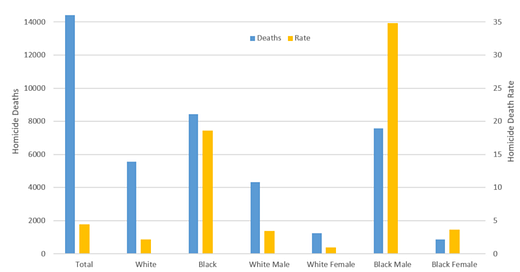



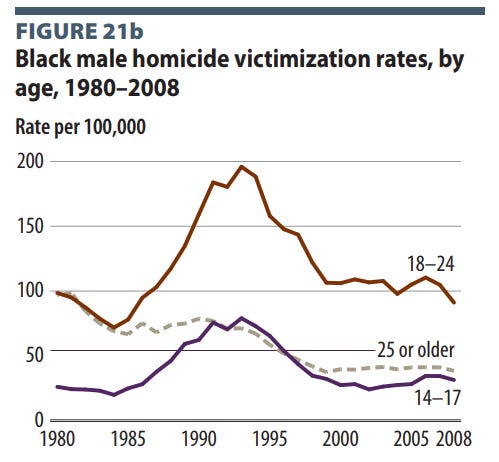
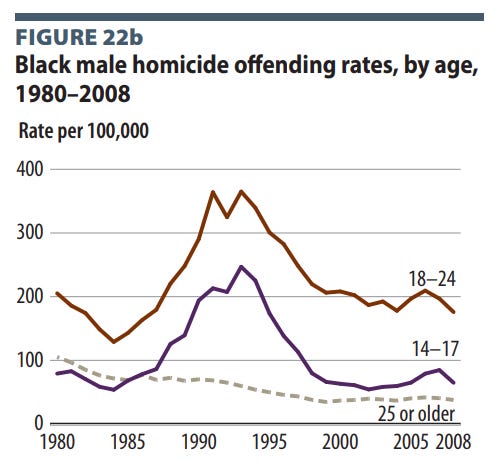
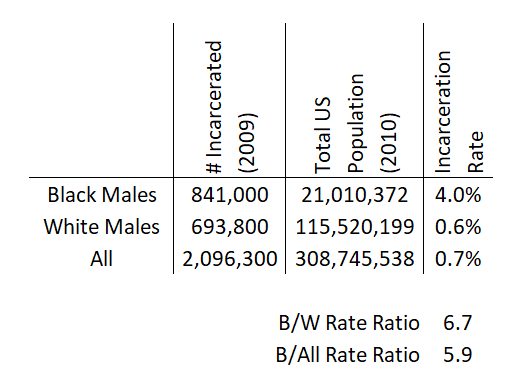
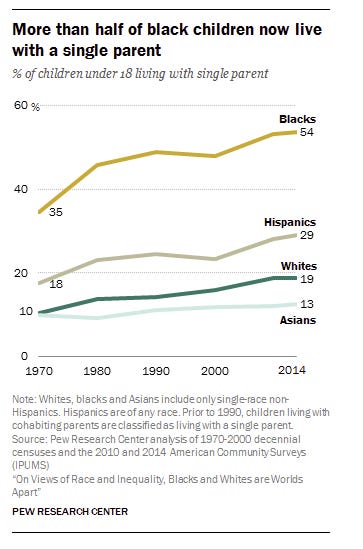
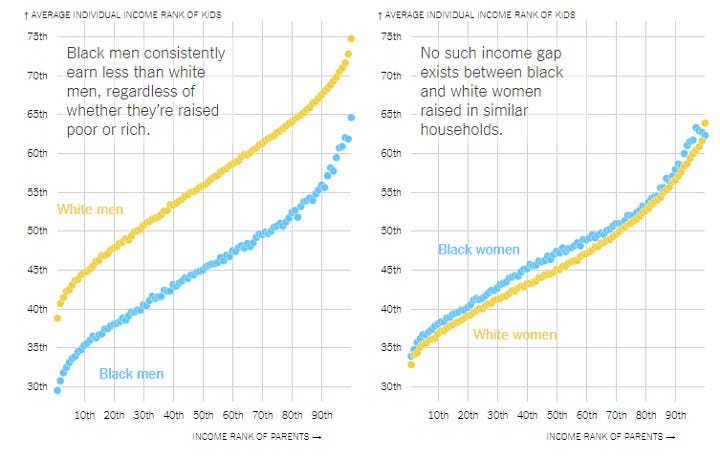

Cycling back to your thoughtful and constructive post two years later ...
Just came across a first-hand look at the "Honor Culture," as a key part of the violence problem, in a Baltimore Sun piece by Lee O. Sanderlin on July 21, 2023:
https://www.baltimoresun.com/maryland/baltimore-city/bs-md-ci-baltimore-youth-violence-killings-increase-20230721-mr3fz4tw5navbcbwvtnrjr4nja-story.html
We've already known that pandemic-era restrictions separated young people in their teens and twenties from support: particularly from schools, as well as from jobs, addiction support groups, and anti-violence programs.
"As the world closed in 2020, Baltimore’s young people detached from already flawed systems, like the city schools, leaving them more susceptible to gun violence, Webster said. The Sun’s analysis of city crime data shows that the rate at which Baltimore’s youth are victims in nonfatal shootings has increased each year since 2020."
Yet there was another, perhaps more subtle impact from that time? As people's real-life interactions diminished for a while, their on-line interactions became more salient. (And to be sure, this isn't solely due to the pandemic, but also the much longer-term trend toward widespread use of social networks and mobile phones.)
That means that, where formerly a "hard stare" or "diss" in a public place might be observed by a small group of one's peers, now such reputational challenges are witnessed by a vastly larger audience. (And perhaps talked about and shared far more widely, too, in ripple effects that go on for days.) That's made it far more difficult for young men to just slough off such challenges without retaliating.
"[Antonio] Moore, who is known in his neighborhood as “Da Youngest in Charge,” said people do not understand the new prominence of social media in this context.
"“You can always talk about the socioeconomic issues, the stuff people have been talking about for years, with poverty and everything else,” Moore said. “But the psychological role social media plays in these shootings has been a real ignored factor.”
"City officials have often described social media feuds that end in gunplay as “petty.” Scott, the mayor, once termed the feuds “dumb s---” during a news conference.
"But that sort of thinking discounts the lives of young men experiencing extreme poverty and whose most prized possession is their reputation, experts and community members said. What used to be a beef in the neighborhood or in the streets is now broadcast to everyone online, raising the stakes.
"“There could be 10,000 eyes on me that saw me go through [a bad or disrespectful] situation, so now how am I going to respond to that?” Moore said. “How am I supposed to take that? Now that’s 10,000 reasons for me to go do what I really need to do so I can show them I’m not playing. It doesn’t feel that way, it’s the truth.”
"[Greg] Marshburn said figuring out how to address and squash disputes that originate on social media is a challenge because the Safe Streets model is based on in-person interactions with people whom the violence interrupters know."
I haven't yet been able to find much discussion about this aspect to the gun violence problem, and I'm hoping you might consider writing about it and sharing it with a larger audience at some future time? Researchers who look at the impact of social networks on mental health are often looking at depression and bullying, or sometimes the copycat effect of publicized mass shooting, but far less often at how honor culture directly intersects with such networks. And I'm not sure to what extent researchers studying gun violence have come across this, either?
Also, when thinking about "the lives of young men experiencing extreme poverty ... whose most prized possession is their reputation," perhaps one key way to leverage that is to focus on building up a rich collection of avenues for reputational hierarchies, that give these men recognition and respect, outside of a violence-based pecking order.
Those obviously include sports and academics, but can also involve work, business, and creative endeavors. If there's a rich array of available competitive hierarchies, and most men can find their niches in one or (ideally) several of these – and they're seen as manly and estimable places to work hard and "strut one's stuff" – that might reduce the incentive to compete in the rawest hierarchy of destructive power. A hierarchy that not only inflicts the most damage on themselves, but also vast collateral damage on other people living in their neighborhoods, as well.
(And yes, there are obviously young men who compete in sports or business or creative endeavors, who also compete on occasion in violence-based hierarchies. Perhaps a more nuanced approach is needed to understand how competing in those other, less violent hierarchies can become entirely sufficient. One possibility, among many, is that disaffected young men who don't fit into and/or feel they can achieve success in other hierarchies, might challenge those engaged in more constructive endeavors to join them in that raw battlefield, and that fending off those challenges still feels reputationally necessary. I have a couple of other thoughts about that, as well, that are still more inchoate.)
I disagree with the bump-stock bit. Bump stocks exist solely because the Hughes amendment to FOPA froze the machine gun supply and prices for legal ones are stupid high. If the Hughes amendment were repealed and machine guns were again allowed to be made and registered, demand for bump-stocks would drop to near zero. At that point, requiring their registration would only push demand to basically zero.
Between 1934 and 1986, there were ZERO documented cases of legally registered MGs being used in crime. The only two instances of such crimes happened, ironically, AFTER the Hughes amendment. The Hughes amendment was literally a pointless poison pill amendment, passed through a dubious voice vote in the middle of the night, meant to derail the FOPA entirely. It didn't, and now we're stuck with an practical ban that also has no efficacy (and a negative 100% correlation to boot).
But I get why repealing Hughes isn't listed: Culture war politics. Like a recent OSD article about suppressors, machine guns are haram. Just putting the words "legalize" and "machine gun" in the same sentence will turn off 90+% of the population to any connected proposal.